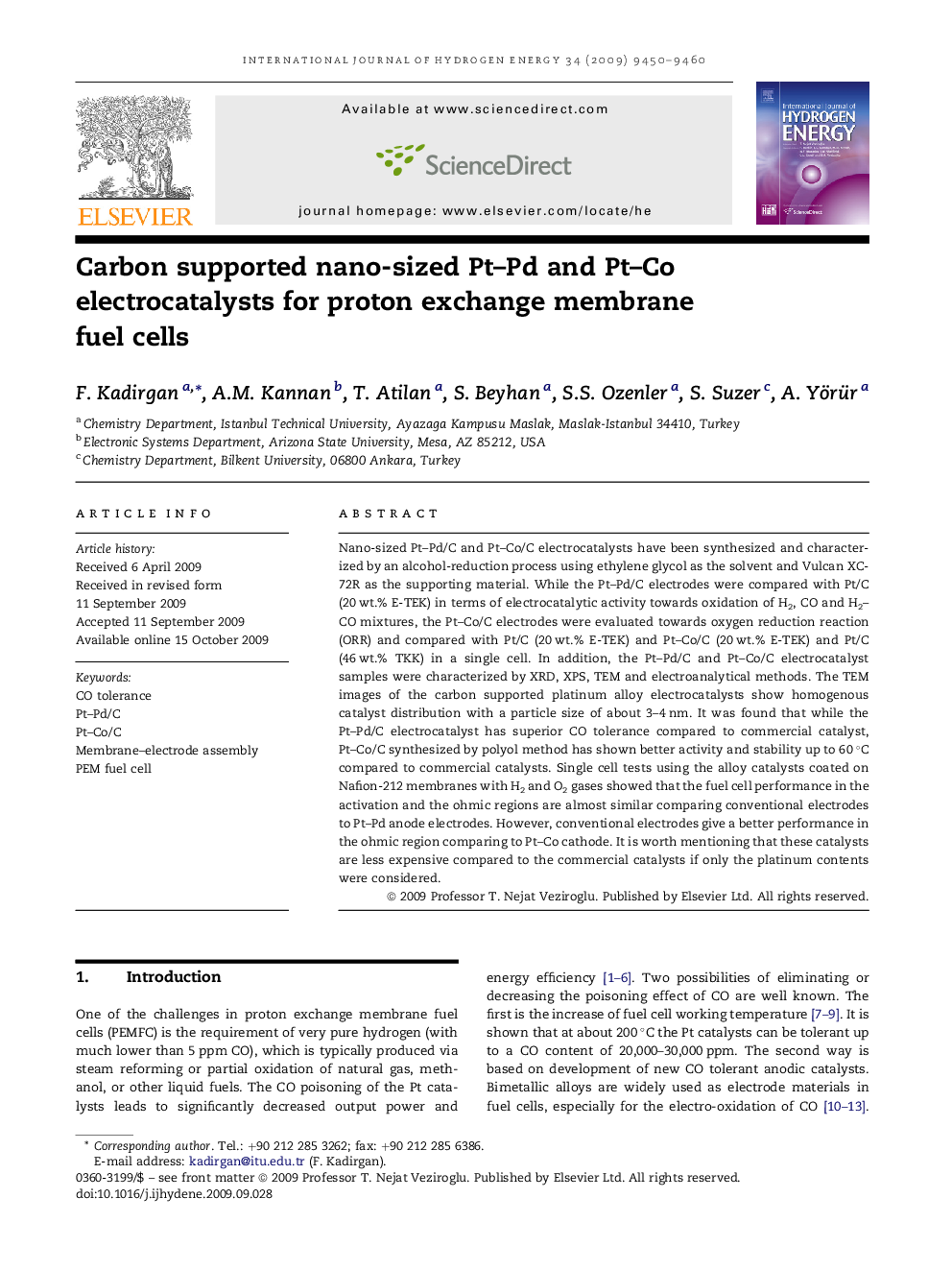| Article ID | Journal | Published Year | Pages | File Type |
|---|---|---|---|---|
| 1277239 | International Journal of Hydrogen Energy | 2009 | 11 Pages |
Nano-sized Pt–Pd/C and Pt–Co/C electrocatalysts have been synthesized and characterized by an alcohol-reduction process using ethylene glycol as the solvent and Vulcan XC-72R as the supporting material. While the Pt–Pd/C electrodes were compared with Pt/C (20 wt.% E-TEK) in terms of electrocatalytic activity towards oxidation of H2, CO and H2–CO mixtures, the Pt–Co/C electrodes were evaluated towards oxygen reduction reaction (ORR) and compared with Pt/C (20 wt.% E-TEK) and Pt–Co/C (20 wt.% E-TEK) and Pt/C (46 wt.% TKK) in a single cell. In addition, the Pt–Pd/C and Pt–Co/C electrocatalyst samples were characterized by XRD, XPS, TEM and electroanalytical methods. The TEM images of the carbon supported platinum alloy electrocatalysts show homogenous catalyst distribution with a particle size of about 3–4 nm. It was found that while the Pt–Pd/C electrocatalyst has superior CO tolerance compared to commercial catalyst, Pt–Co/C synthesized by polyol method has shown better activity and stability up to 60 °C compared to commercial catalysts. Single cell tests using the alloy catalysts coated on Nafion-212 membranes with H2 and O2 gases showed that the fuel cell performance in the activation and the ohmic regions are almost similar comparing conventional electrodes to Pt–Pd anode electrodes. However, conventional electrodes give a better performance in the ohmic region comparing to Pt–Co cathode. It is worth mentioning that these catalysts are less expensive compared to the commercial catalysts if only the platinum contents were considered.
